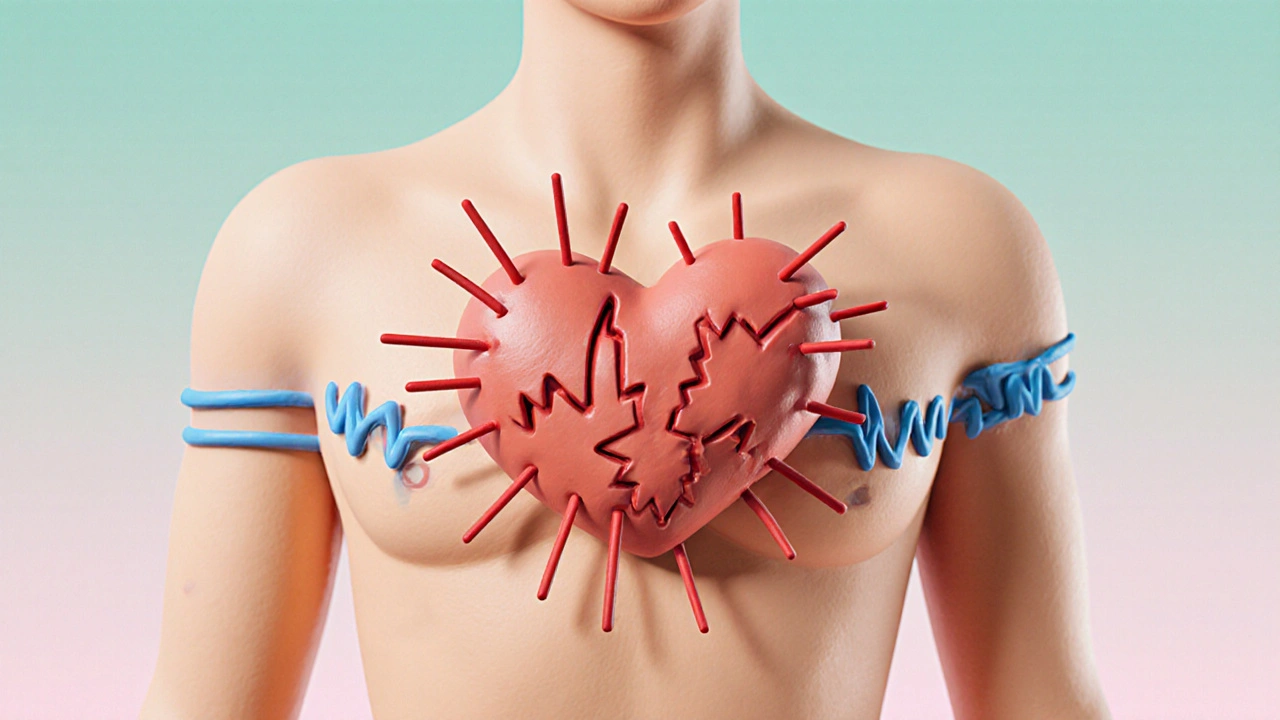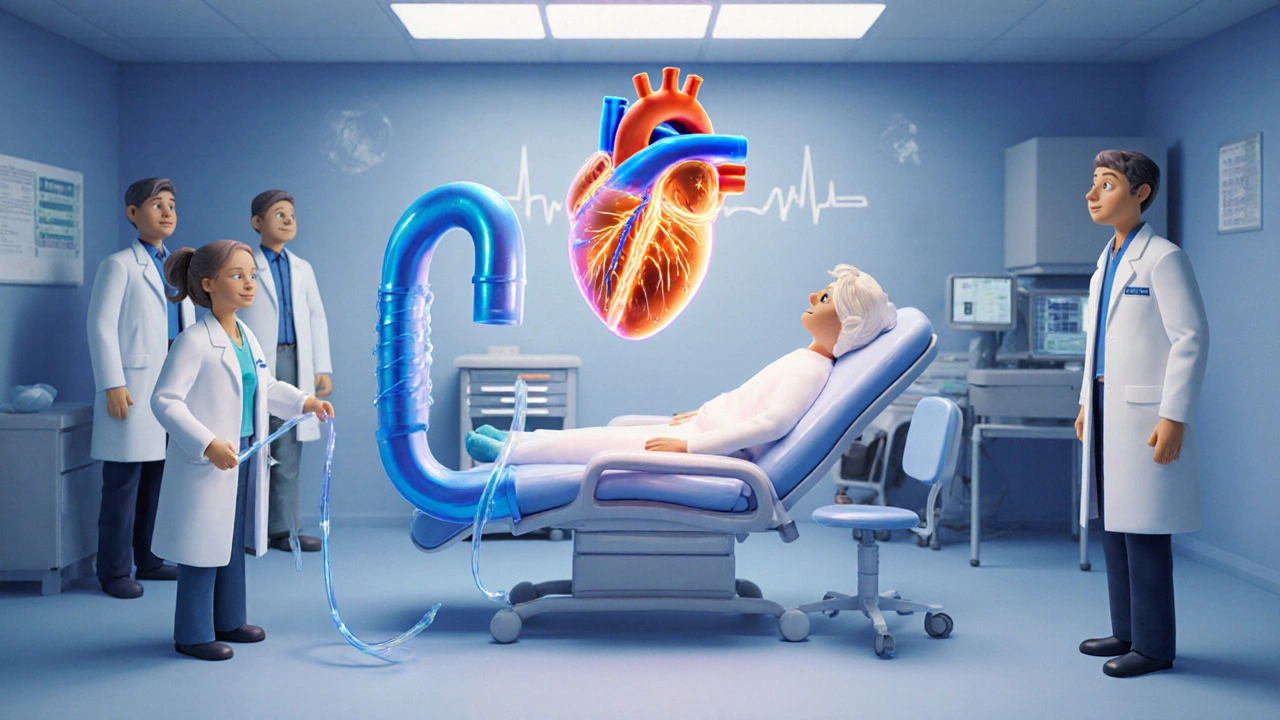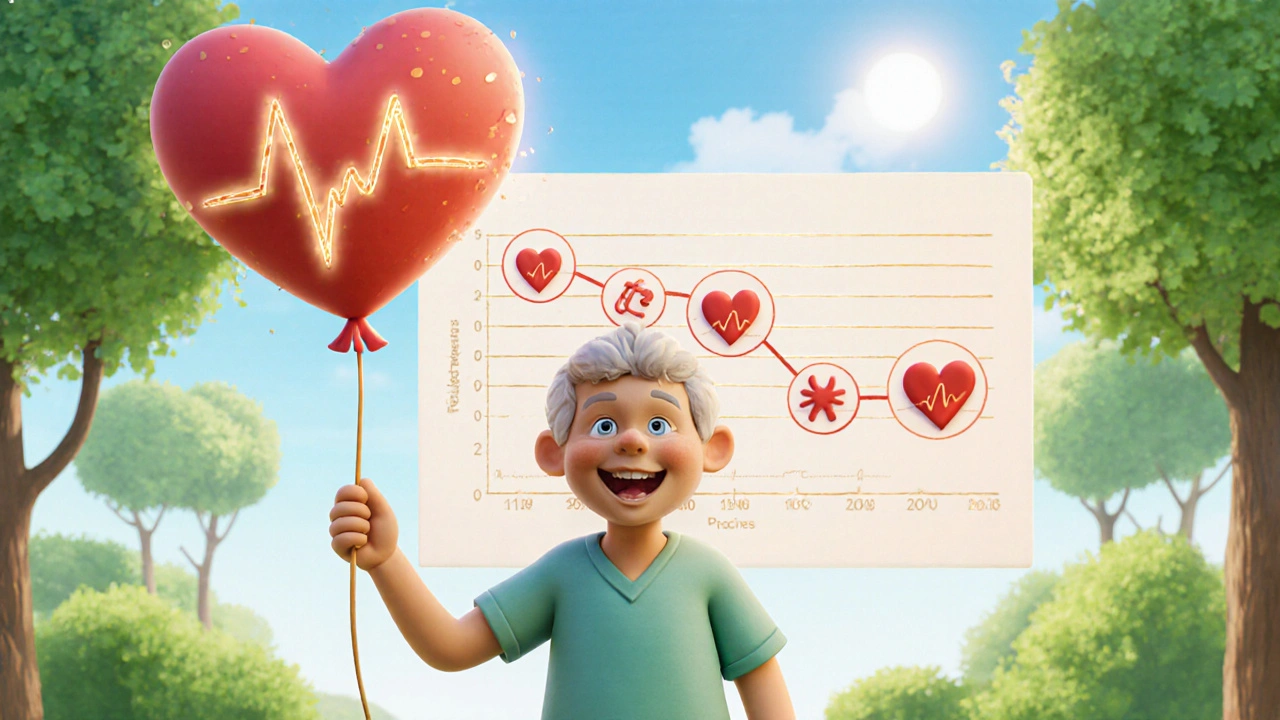Cardiac Ablation for Irregular Heartbeat: Role, Procedure & Benefits

Ablation Success Rate Calculator
Personalized Success Rate Estimator
Estimate your potential success rate for cardiac ablation based on your arrhythmia type and treatment history. Results are based on clinical data and are estimates only.
When a heart starts beating too fast, too slow, or in a chaotic rhythm, the everyday feeling can range from a harmless flutter to a life‑threatening emergency. For many patients, the answer isn’t another drug but a focused, minimally invasive fix: cardiac ablation. This article walks you through what the procedure does, who it helps, how it’s done, and what to expect afterward.
What is Cardiac Ablation?
Cardiac Ablation is a minimally invasive procedure that uses heat, extreme cold, or radio‑frequency energy to destroy small areas of heart tissue that are causing abnormal electrical signals. By targeting those rogue pathways, the heart can regain a regular rhythm without the need for lifelong medication.
Understanding Irregular Heartbeat (Arrhythmia)
Irregular Heartbeat (also called arrhythmia) describes any condition where the heart’s electrical system fires out of sync, leading to beats that are too fast, too slow, or erratic. The most common types include:
- Atrial Fibrillation - rapid, disorganized signals in the upper chambers (atria)
- Ventricular Tachycardia - fast rhythm originating in the lower chambers (ventricles)
- Supraventricular tachycardia, premature atrial or ventricular beats, and others.
While some arrhythmias are harmless, others increase the risk of stroke, heart failure, or sudden cardiac death. Deciding when to intervene is a balance of symptom severity, underlying heart health, and treatment response.
When Do Doctors Recommend Ablation?
Ablation isn’t the first line for every irregular heartbeat. Usually, doctors follow this pathway:
- Confirm the type of arrhythmia with an Electrophysiology Study - a test where catheters map the heart’s electrical activity.
- Try lifestyle changes and antiarrhythmic drugs (e.g., beta‑blockers, amiodarone).
- If symptoms persist, or the arrhythmia poses a high‑risk scenario, discuss ablation as a curative option.
Typical candidates include patients with symptomatic atrial fibrillation who have failed medication, those with frequent episodes of supraventricular tachycardia, or individuals with ventricular tachycardia linked to scar tissue.

The Procedure Step‑by‑Step
Modern cardiac ablation is performed in a specialized EP (electrophysiology) lab. Here’s what you’ll experience:
- Preparation: After a brief fasting period, you receive a mild sedative. The team checks your blood pressure, rhythm, and anticoagulation status.
- Vascular Access: Using a thin Catheter - a flexible tube - the physician threads it through a vein in the groin (femoral) or sometimes the neck (internal jugular).
- Mapping: The catheters carry tiny electrodes that record electrical signals. The EP specialist creates a 3‑D map of your heart’s conduction pathways, pinpointing the exact spot that’s misbehaving.
- Energy Delivery: Once the target site is identified, the doctor activates the chosen energy source - radio‑frequency (heat) or cryoablation (freezing). The energy creates a small scar that blocks the faulty circuit.
- Testing: After ablation, the team re‑tests the rhythm to ensure the arrhythmia can no longer be induced.
- Removal & Recovery: The catheters are withdrawn, pressure is applied to the access site, and you’re moved to a recovery area for a few hours of monitoring.
Most patients go home the same day or after an overnight stay. Full activity resumes within a week, although intense exercise may be delayed for two weeks.
Choosing the Energy Source: Radiofrequency vs Cryoablation
Both methods achieve the same goal-creating a permanent lesion-but they differ in how they do it. Below is a quick side‑by‑side look.
| Attribute | Radiofrequency (RF) Ablation | Cryoablation |
|---|---|---|
| Energy Form | Heat (up to 70°C) | Freezing (down to -70°C) |
| Typical Use | Atrial fibrillation, most supraventricular tachycardias | AV nodal re‑entrant tachycardia, areas near delicate structures |
| Pros | Proven track record, shorter lesion time | Less risk of collateral damage; test‑and‑stop feature |
| Cons | Potential for overheating nearby tissue | Longer freeze cycles, slightly higher equipment cost |
| Recovery | Similar for both; no major difference | Similar for both; no major difference |

Benefits, Risks, and What to Expect After Ablation
Benefits are clear: most patients experience a significant reduction or complete elimination of arrhythmia episodes, lower reliance on medication, and an improved quality of life. Studies show that for atrial fibrillation, success rates range from 70‑80 % after a single procedure, climbing above 90 % after a repeat.
Risks are low but worth knowing:
- Bleeding or hematoma at the catheter insertion site (about 2‑5 %).
- Rare damage to the heart’s normal tissue, potentially causing a new arrhythmia.
- Blood clots leading to stroke, which is why anticoagulants are often prescribed for a few weeks post‑procedure.
- Infection - extremely uncommon with sterile technique.
Because the procedure is performed under conscious sedation, you stay awake enough to talk with the team, yet you’re comfortable and relaxed. Most people report a brief sensation of warmth or cold when energy is applied, followed by a calm after the lesion forms.
Alternatives and Complementary Strategies
If ablation isn’t right for you, or you want to pair it with other approaches, consider:
- Antiarrhythmic Drugs: Medications like flecainide, sotalol, or dronedarone can control rhythm but may have side effects.
- Pacemakers or Implantable Cardioverter‑Defibrillators (ICDs): Devices that correct slow or dangerous fast rhythms, often used when the heart’s electrical system is severely damaged.
- Lifestyle Changes: Reducing alcohol, caffeine, and stress; maintaining a healthy weight; and treating sleep apnea can lower arrhythmia triggers.
- Cardioversion: A synchronized shock that briefly pauses the heart to reset its rhythm, typically used for short‑term restoration before considering ablation.
Many patients end up on a combination of medication and ablation, especially if they have structural heart disease. Your cardiologist will tailor a plan based on your specific rhythm problem, age, and overall health.
Frequently Asked Questions
How long does a cardiac ablation take?
Typical procedures last 2-4 hours, including mapping and energy delivery. Complex cases, such as extensive atrial fibrillation, may run longer.
Is the procedure painful?
You’ll be under conscious sedation, so you won’t feel pain. Some patients sense a brief warmth or cold spot when the energy is applied, which is normal.
Can I go back to work after ablation?
Most people return to a desk job within 2‑3 days and to physically demanding work after about a week, provided there are no complications.
What follow‑up care is needed?
You’ll have a post‑procedure check‑up within 1-2 weeks, an ECG or Holter monitor to confirm rhythm stability, and possibly a short course of anticoagulants if you had atrial fibrillation.
Will I need medication after ablation?
Many patients taper off antiarrhythmic drugs after a successful ablation, but some stay on low‑dose beta‑blockers or anticoagulants depending on underlying risk factors.
Whether you’ve just heard the term for the first time or you’re weighing it against other treatments, understanding the role of cardiac ablation helps you make an informed choice. Talk with your electrophysiologist, ask about success rates for your specific arrhythmia, and weigh the benefits against the modest risks. For many, the result is a steadier heartbeat and a freer life.

Madhav Dasari
October 19, 2025 AT 21:27Yo, if you’re freaking out about that wild flutter, know that cardiac ablation can literally hit the reset button on your heart’s crazy rhythm. Think of it like a tiny superhero zap that says ‘no more’ to those rogue signals. It’s minimally invasive, so you’re not diving into open‑heart drama – just a few catheters and you’re back to living.
Christian Georg
October 19, 2025 AT 22:00Exactly, the procedure basically maps out the misfiring pathways with a 3‑D model before zapping them off. The EP lab uses radio‑frequency heat or cryo‑freeze, and most folks feel just a brief warmth or chill – no pain thanks to the sedation 😊. Recovery is usually a night in the hospital and you can shake off the grogginess in a few days.
Caroline Keller
October 19, 2025 AT 22:34Honestly this whole ablation hype feels like a quick fix for a problem that needs lifestyle changes too
dennis turcios
October 19, 2025 AT 23:24Look, the hype around ablation often ignores the fact that not every arrhythmia needs a high‑tech fix. If you can manage with meds and lifestyle tweaks, why jump straight into a procedure that carries even a small risk of new arrhythmias? It’s not a magic bullet.
Felix Chan
October 19, 2025 AT 23:57Totally get your point, but for many folks the meds just don’t cut it and they’re stuck with constant palpitations. A successful ablation can actually free them from that daily anxiety and let them get back to normal life faster.
Thokchom Imosana
October 20, 2025 AT 01:04There is a growing undercurrent of skepticism that the cardiac ablation boom is being fueled more by industry profit motives than pure patient need.
When you peel back the glossy marketing brochures, you find that the same companies that manufacture the catheters also own the training programs for electrophysiologists, creating a feedback loop of revenue generation.
This entanglement subtly nudges clinicians toward recommending a procedure that, while effective for many, is not always the first line of defense that independent guidelines would suggest.
Moreover, the data that touts a 90% success rate after repeat procedures often comes from single‑center studies with limited patient diversity, raising questions about external validity.
Patients with comorbidities or atypical arrhythmias may not experience the same outcomes, yet the headline numbers are presented as universal guarantees.
Adding another layer, the reimbursement structures in many healthcare systems reward procedural volume, inadvertently incentivizing more ablations.
The subtle pressure on physicians to maintain a high procedural caseload can lead to a slippery slope where borderline cases are upgraded to ablation without exhaustive trial of medical therapy.
One must also consider the hidden costs, such as the need for lifelong anticoagulation in atrial fibrillation patients post‑ablation, which can be a financial and health burden.
While the technology itself is undeniably impressive, the narrative that it is a panacea overlooks the fact that the heart is an intricate organ where interventions can have unforeseen electrophysiological consequences.
A new arrhythmia emerging after an ablation is a rare but documented phenomenon, reminding us that creating scar tissue can sometimes rewrite the electrical script in undesirable ways.
Patients should be armed with a clear understanding that invasive procedures are not without trade‑offs, and that the decision matrix must include personal risk tolerance, lifestyle factors, and long‑term medication plans.
In the era of personalized medicine, the one‑size‑fits‑all approach propagated by some device manufacturers feels antithetical to the nuanced care we aspire to provide.
Thus, a healthy dose of critical appraisal and open dialogue with an independent cardiology specialist is essential before signing any consent forms.
Transparency about potential conflicts of interest, the exact success metrics, and realistic recovery timelines can empower patients to make genuinely informed choices.
Ultimately, the promise of a steadier heartbeat should not eclipse the imperative to scrutinize the economic and systemic forces that shape medical recommendations.
Only by keeping a vigilant eye on these undercurrents can we ensure that technology serves patients, not profit margins.
Maridel Frey
October 20, 2025 AT 01:37While it’s true that commercial interests can influence medical recommendations, the peer‑reviewed data on ablation success rates remain robust. Patients should discuss both the benefits and the potential conflicts of interest with their electrophysiologist.
Kevin Sheehan
October 20, 2025 AT 02:27From a philosophical standpoint, choosing ablation is essentially a decision about how much control we demand over the randomness of our own biology. It raises the question: do we seek to dominate every flaw, or accept the imperfect rhythm as part of the human condition? The balance between technological intervention and natural variability is a microcosm of our broader quest for mastery.
Jay Kay
October 20, 2025 AT 03:01In short, ablation works, but it’s not a miracle cure.